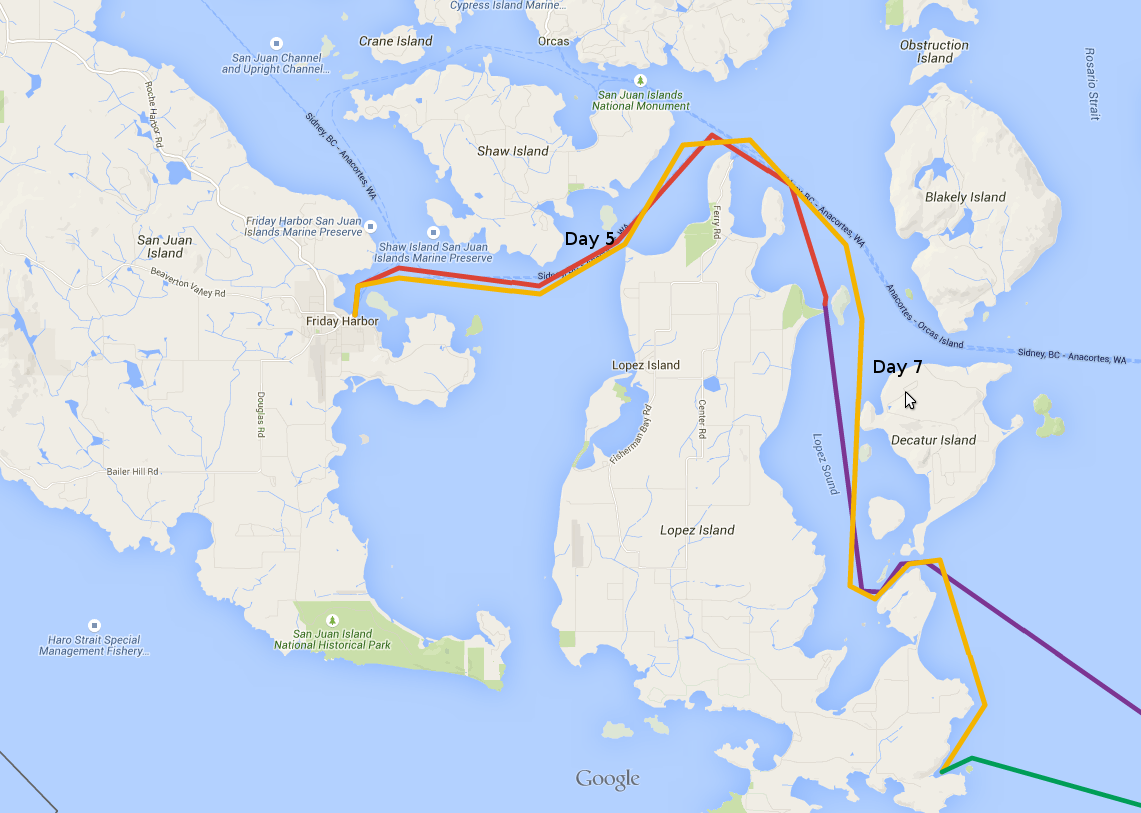
Day 7 (Orange).
Day 1/2 Day 3 Day 4 Day 5 Day 6 Day 7 Day 8 Day 9 Day 10 Day 11

Monday morning we got up, ate breakfast, and tried to figure out our next step. It was time to start thinking about working our way back towards Seattle. Deb's cat, Tigre, was staying at some swanky kitty hotel, and Deb was scheduled to pick him up sometime before they closed on Friday, if possible, so that was our goal for being home in Seattle. I wanted to sail south across the Strait of Juan de Fuca to Port Townsend and spend a night there, and then continue on south to Port Ludlow or Kingston and finally back to Seattle. We spent some time looking at the weather forecast for the Strait, and it seemed like Tuesday would be a good day to cross. So for today, our goal was to get as far south in the islands as possible, so that the next morning we could zip across the Strait. After consulting the guidebook and considering various options, we settled on Watmough Bay as our destination. Watmough Bay is on the southeast corner of Lopez island, a perfect location from which to launch our assault on the Strait. Further, it was described by the guidebook as being protected from all but a southerly wind, and having 3 free mooring bouys as well as good anchoring. The scenery was supposed to be spectacular. With the winds predicted to be 10 kts from the northwest that night, it seemed like a perfect location.
This first challenge was how to get there. The obvious route seemed to be sailing south between San Juan and Lopez islands, then east around the bottom of Lopez. However, the current had other plans. For most of the time we'd be fighting a current from the south, and particularly where the pass between the two islands narrows, it would be running around 4 knots. With a 6 knot boat speed, that didn't leave a whole lot for forward progress. So, after some planning, I realized that we could retrace our route over the top of Lopez, then down Lopez Sound, out into Rosario Strait and south to Watmough Bay, and the current would be more or less helping us, or at the very least, not hindering us. I was reluctant to retrace our route, but it seemed like the most reasonable option, so we decided to go with that.
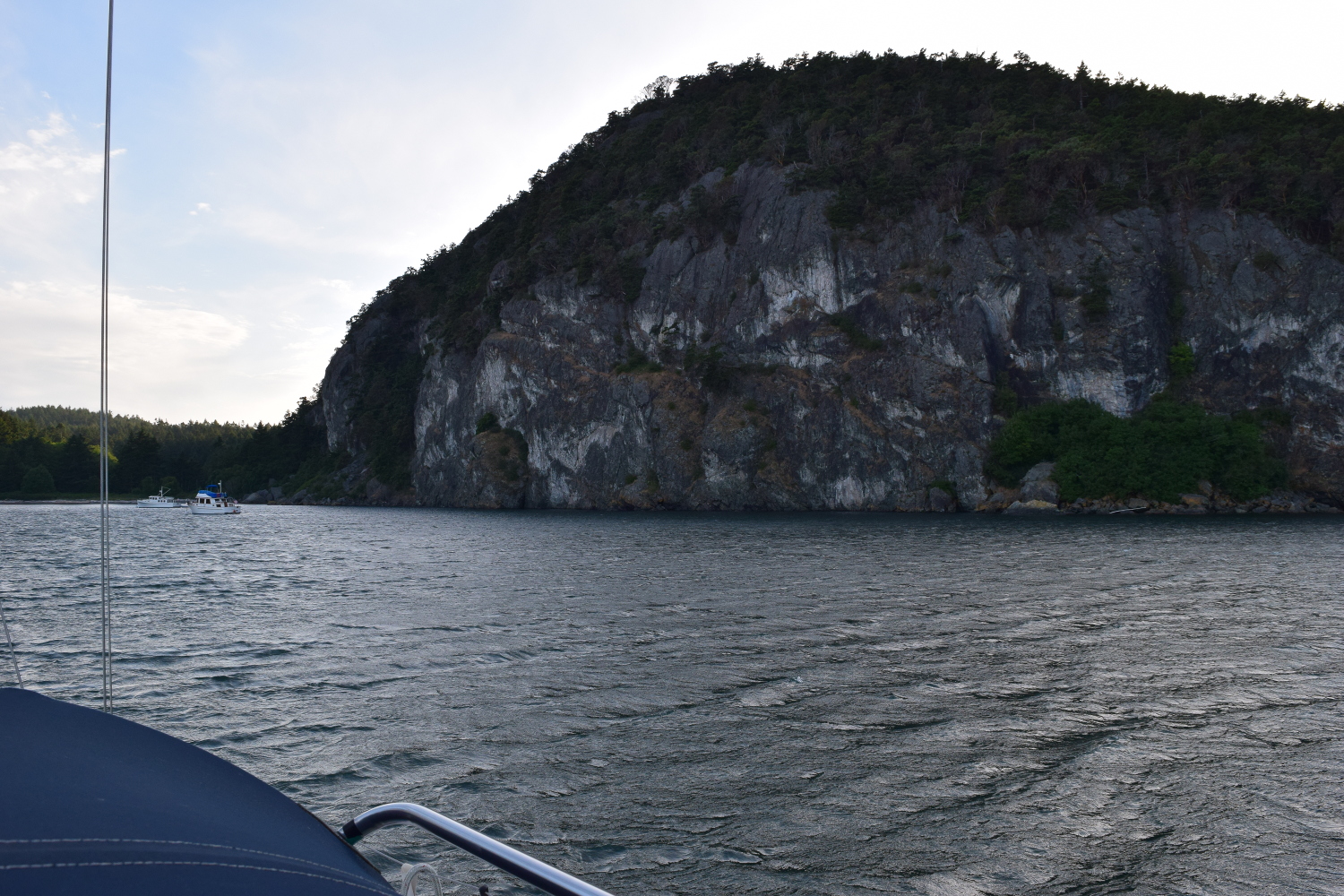
Our first stop was the pumpout dock to pump out our holding tank. The way this works is pretty simple: there is a deck fitting with a pipe that goes down to the tank. The pumpout machine is essentially a large wet vac, and you just stuff the nozzle into the deck fitting and turn the machine on. Then it takes a couple of minutes to suck the contents out of the tank. Only this time... nothing much happened. The machine was running, but only a trickle of stuff was coming through the hose. Then a burst of normal flow, then nothing again. This happened over and over, and I came to the conclusion that there must be some sort of clog, like when you try and drink a frozen drink with a straw, and little chips of ice get stuck in the straw. You have to blow through the straw to clear it, then try drinking again. In our case it involved starting and stopping the machine, and trying to pour water down the pipe to the tank. After what seemed like an hour, we managed to get the tank mostly emptied. Since I have not had this problem before or since, I have decided that the machine just sucked, or rather, didn't.
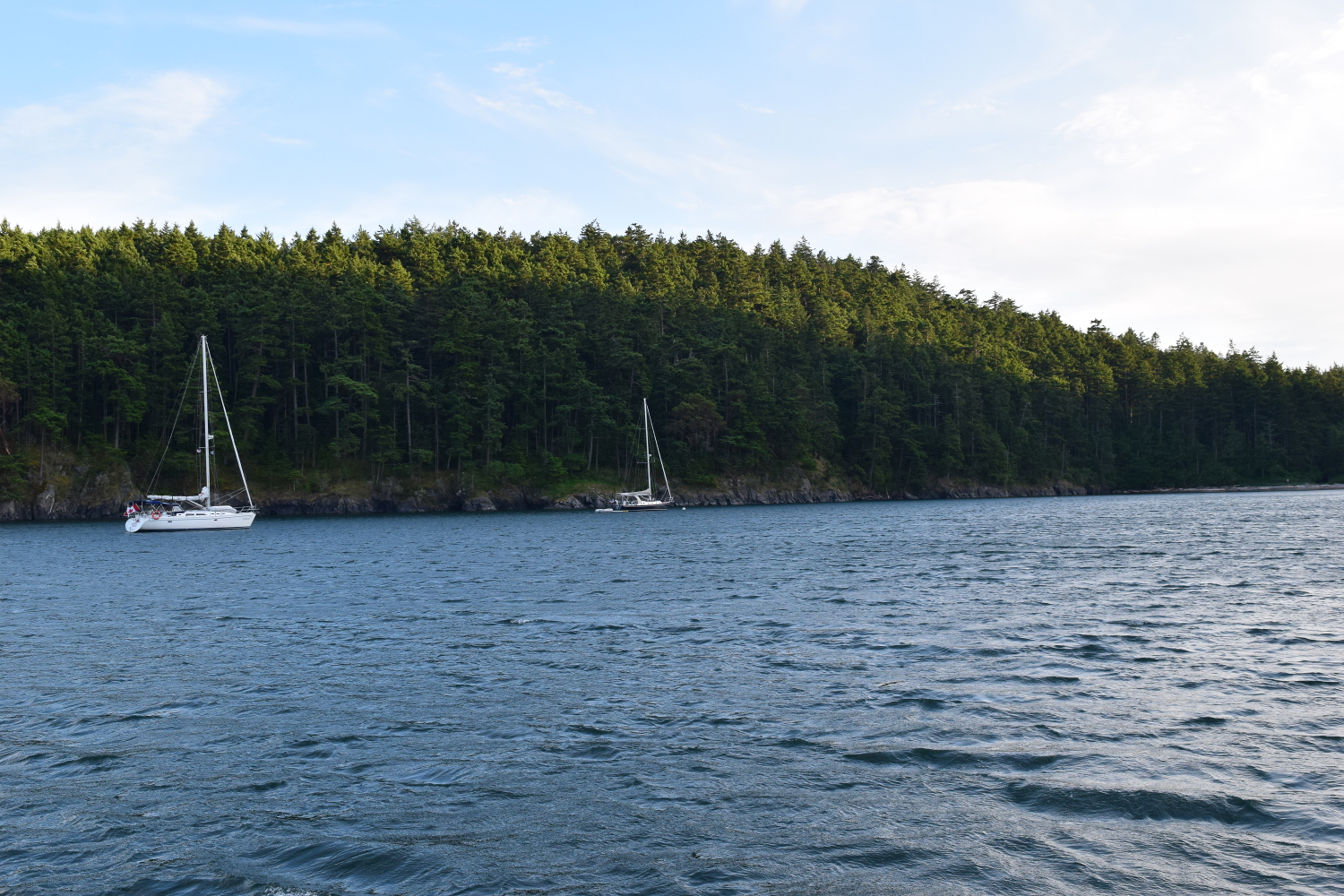
With the tank emptied, we motored out of the marina and out into San Juan channel. We had some wind, so we put the sails up and enjoyed a bit of relaxing sailing. Back up between Lopez and Canoe island, the site of our previous high wind shenanigans, only this time the wind was getting lighter and lighter. By the time we got to the north end of Lopez, we were barely moving, and then the wind died altogether. I was determined to sail however, so we waited, and after a little while we drifted into a barely perceptable breeze and started moving along at 1 knot or so. A ferry came into view coming towards us from the east. We were, of course, directly between it and the ferry dock on Lopez, and barely moving, so we started the motor and got out of its way. We motored around the east side of Frost island (Spencer Spit is just off the west side of Frost Island), and discovered a little bit of wind. Sails back up, motor back off, and we were sailing again! Not quickly, but sailing none the less. We managed to get about halfway down Lopez Sound before having to start the motor again. Near Lopez Pass the wind picked up a little and we were able to sail out the pass and into Rosario Strait. Then we turned south and headed for Watmough Bay. As we got closer, the wind picked up more and more. By the time we rounded the last point of land, Cape St Mary, before entering the bay, the wind had picked up enough that we were on the brink of being overpowered again. That was ok though, because it was time to fire up the motor and drop the sails anyway.
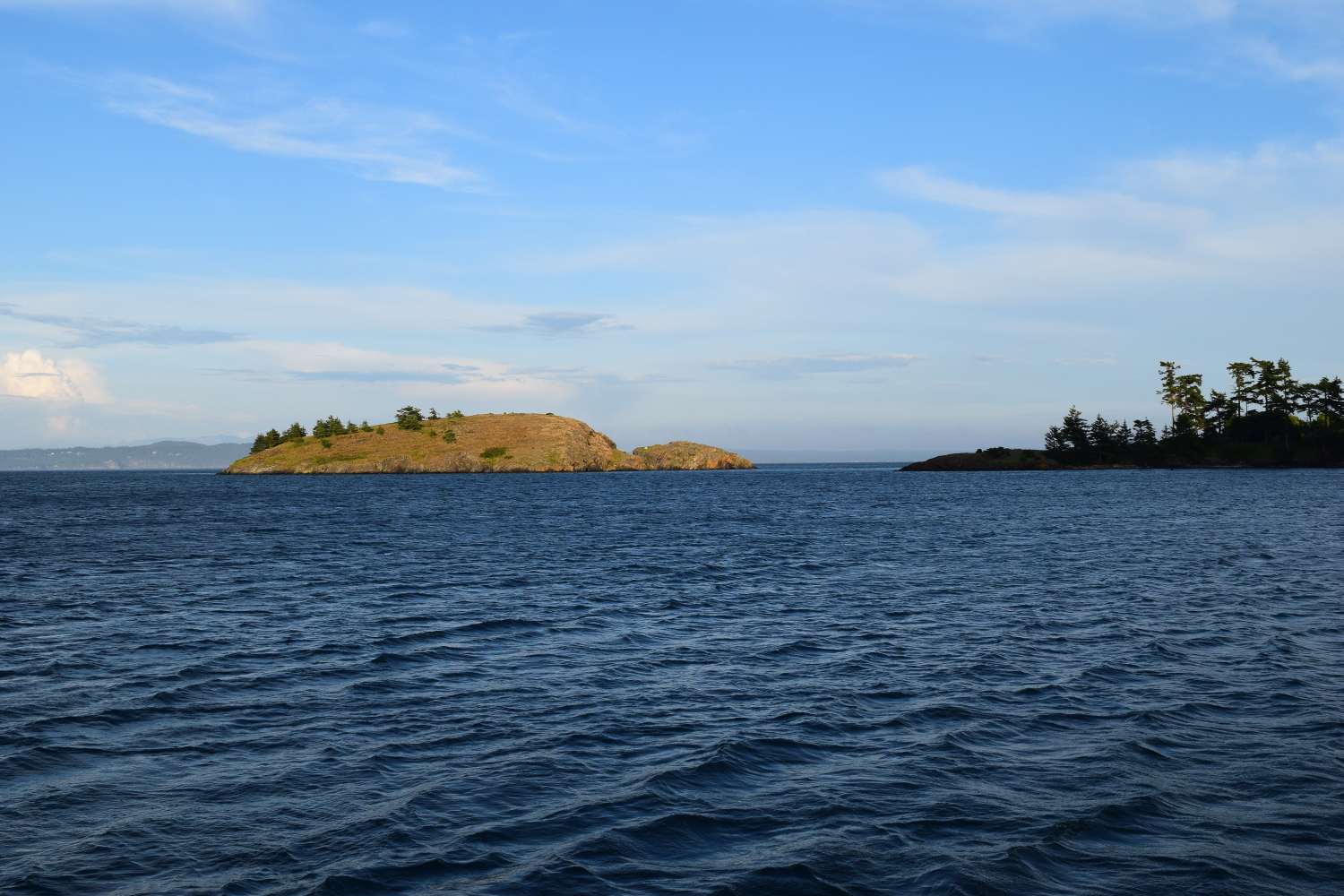
I turned the key, pressed the start button, and.... nothing. The engine didn't even turn over. It didn't even try to turn over! This has happened one or two other times since I have had the boat. I think there is an intermittent break in the starter wiring someplace. Unfortunately it happens only very rarely, and never when I am in a position to try and troubleshoot it! With Deb sailing the boat, I raced down into the cabin to the engine compartment, pulled the cover off, and used a screwdriver to hotwire the starter solenoid. The engine roared to life, and we were back in business! We furled the genoa and pulled down the main, and motored into Watmough Bay.
With the sails away, we could take stock of our surroundings. The bay did indeed provide some spectacular scenery, with a sheer rock wall rising straight up from the water on the north side. The west and south sides were evergreen covered hillsides, with a small beach at the head of the bay to the southwest. I could see why the guidebook recommended it. Unfortunately, so could other people, because there were already 4 boats there. Three were tied up to the mooring bouys, with the fourth anchored. With the wind howling in the rigging, Deb and I wondered what to do. It was around 8pm, too late to try and head someplace else. The only available mooring bouys were occupied already. The wind gauge showed 24 gusting to 30, and my only previous anchoring experience was with winds of about 5mph. To say that we were apprehensive about anchoring in these conditions would be putting it mildly! But, we really had no other reasonable choice. Besides, that other boat seemed to be doing fine, so maybe we'd be alright.
With that decision made, we picked a spot to anchor. There was plenty of room, so at least we didn't have to deal with issues of crowding. Deb dropped the anchor and we did everything we knew to make sure it held. We let out a large amount of anchor line so that the pull would be more horizontal. I put the boat in reverse and set the anchor, gradually throttling all the way up to full power. Even at full power, the anchor held firmly, which seemed like a good sign. Then we added kellets, weights that slide down along the anchor line to help pull it down in the middle between the boat and the anchor, so that the pull on the anchor is even more horizontal. Then I marked our position on the GPS, and took compass bearings on everything I could. The boats on moorings all had anchor lights on, making them easy to pick out at night, so I took bearings on each of them and wrote them all down. Deb and I sat nervously at the table listening to the wind and watching the wind meter as the boat swayed and lurched in a decidedly unsettling manner.
I had some planning and plotting to do for our crossing the next day. Deb was of the opinion that we should take turns throughout the night on "anchor watch" so she went to sleep while I did the charting for the next days voyage. After an hour or two, and several trips up on deck to check the bearings to my various landmarks, I realized the wind seemed to have died down a bit. I finished double checking the waypoints in the GPS, and decided that yes, indeed, the wind had died down a fair amount! So, I climbed into bed. Deb, who normally has to have ideal conditions to be able to sleep, had somehow managed to fall asleep. She awoke when I got into bed, wondering if it was time for her watch. I explained that the wind had stopped, and I figured we could just go to sleep and not worry about it. But as we lay there, the sound changed. Something was smacking the stern of the boat. Waves? It sounded like waves, but they should be from the front of the boat, not the back. I went up on deck and found that somehow, although the wind was coming from the southwest, the waves were coming from the east. It was loud enough and distracting enough that it kept us from falling alseep for awhile. And in that while, the wind picked up again, as strong as before.
At some point, we fell asleep.
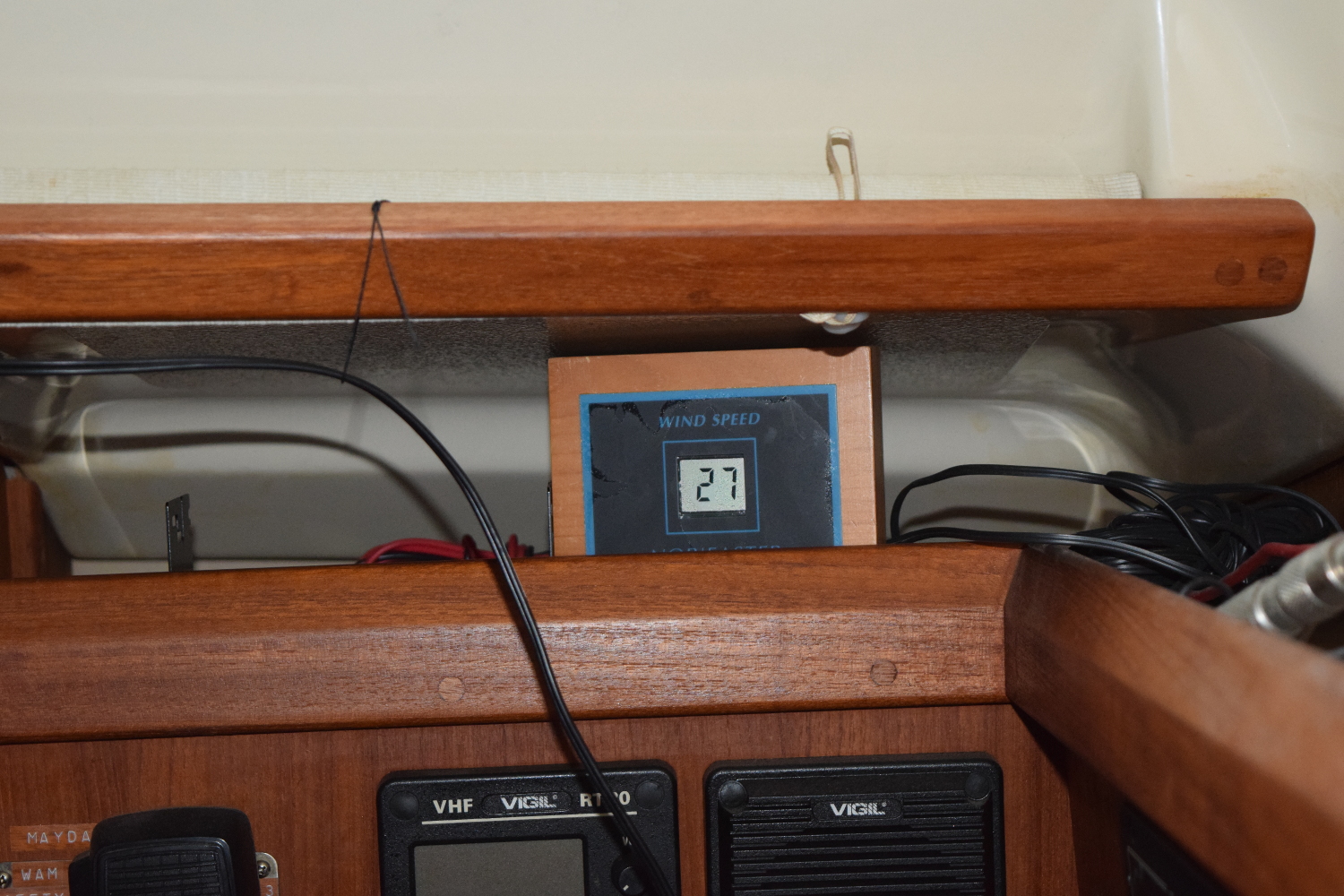
Day 1/2 Day 3 Day 4 Day 5 Day 6 Day 7 Day 8 Day 9 Day 10 Day 11